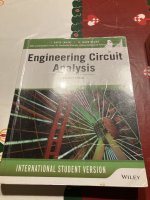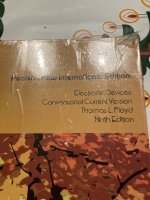If you ran a tube output trafo at that high a flux density it would sound like crap. If you ran the one in your HT receiver that high it would vibrate itself off the table. Perfectly acceptable for power distribution, with flameouts few and far between. Industrial control and inverter transformers tend to be run at higher flux densities than what they use in consumer audio equipment for the same reasons, with similar results. They are generally well made, but produce more hum than stuff meant for consumer use. Sometimes they can be found surplus for cheap, tempting DIYers to use them for audio projects. Then you’ve got to put up with hum.
Most people find that about the Hammond 200 vs 300 series. The 200 series hums and gets hotter.
Size and current draw matter of course. My Hammond 278CX gets louder as the amp biases up. My toroid sounds like a Degauss when I turn on my amp as the caps charge up. Hum is unpleasant and I avoid it as well as I can, but to say no good transformer makes any hum is just incorrect.
Last edited:
Is the 200 series only 120v/60 Hz and the 300 for 120/240/50Hz?
50 Hz capable trafos operated at 60 are a lot quieter.
50 Hz capable trafos operated at 60 are a lot quieter.
I thought I explained this before. I believe those transformer spec's are written, assuming full wave operation, in which case the secondary winding are running in 50% duty cycle. You run those secondary's full-wave-bridge, which run the secondary %100 duty cycle, yes they will run very hot.
Those transformer specs are written like any other. Normal AC VA ratings.
if you bridge rectify a 400-0-400 transformer from the outermost windings you get about 1KV depending on load.
Assuming normal RC filtering, a 500mA Ac transformer leaves roughly 350mA DC.
The secondary are not running 50% duty cycle, if they did the transformer would saturate and catch on fire.
if you bridge rectify a 400-0-400 transformer from the outermost windings you get about 1KV depending on load.
Assuming normal RC filtering, a 500mA Ac transformer leaves roughly 350mA DC.
The secondary are not running 50% duty cycle, if they did the transformer would saturate and catch on fire.
Last edited:
Tell Toronto Hydro... I don't know where you live, but if you don't hear power frequency everywhere you go, you might have hearing loss.
Toronto Hydro is using CDN60Hz, which is like US47.3Hz, so yeah, they hum... but all you need is an updated data sheet and you can run them extra hard with no hum.
you really need to start listening to others who know better . . . .The secondary are not running 50% duty cycle, if they did the transformer would saturate and catch on fire.
I thought I explained this before. I believe those transformer spec's are written, assuming full wave operation, in which case the secondary winding are running in 50% duty cycle. You run those secondary's full-wave-bridge, which run the secondary %100 duty cycle, yes they will run very hot.
False.
Duty cycle is the % of the time it is on. It is used only when the on-off cycles are small compared to the thermal time constant of the transformer. Learn to use Google.
The Utilization Factor of a transformer is a different concept and more related to this discussion. And the UF of full wave is slightly better than center tapped, so wrong again. See calculation here: Transformer Utilization Factor (TUF) | Electrical Concepts
Wrong... Learn how to read a schematic. In Full wave ; is still 50% duty cycle, on the secondary windings.False.
Duty cycle is the % of the time it is on. It is used only when the on-off cycles are small compared to the thermal time constant of the transformer. Learn to use Google.
I have run my 269EX both ways. In full wave, only warm.. In full-wave-bridge, runs hotter than I care for, so I went back to full wave. I've thought of installing a toggle switch, to toggle back and forth, but decided such a mod to too much below me......
In my opinion, resistor R1 (post #1 schematics) does not belong in the circuit, as it conducts DC across the "DC blocker". I think it's best to remove R1. (If it matters to you, Rod Elliott agrees)
In my opinion, R1 should be Infinity ohms, or at the very least, more than 68K ohms. I obtained 68K by deriving a timeconstant using that glorious old pillar of Electrical Engineering, namely, rectal extraction. Then divide the timeconstant by 1 microfarad and presto, out pops 68K. But Infinity is better still.
In my opinion, R1 should be Infinity ohms, or at the very least, more than 68K ohms. I obtained 68K by deriving a timeconstant using that glorious old pillar of Electrical Engineering, namely, rectal extraction. Then divide the timeconstant by 1 microfarad and presto, out pops 68K. But Infinity is better still.
you really need to start listening to others who know better . . . .
See attached some book recommendation, those were first semester stuff.
Implying that an 50Hz AC coupled inductor runs at 50% duty cycle is either a mixup of technical therms at best. It does not apply in this case.
For if you would run a 50Hz AC coupled inductor at said 50% duty cycle you would either, use only one part of the waveform or chop up said waveform.
Chopping up said waveform is entirely possible, the older regulated lab supplies will have a thyristor phase control that varies the angle at which a thyristor is fired.
Furthermore, i would suggest you get in contact with your local chapter American Mensa
Plenty of smart people there that can explain the Dunning-Kruger effect.
Attachments
Most people find that about the Hammond 200 vs 300 series. The 200 series hums and gets hotter.
Size and current draw matter of course. My Hammond 278CX gets louder as the amp biases up. My toroid sounds like a Degauss when I turn on my amp as the caps charge up. Hum is unpleasant and I avoid it as well as I can, but to say no good transformer makes any hum is just incorrect.
I agree every transformer I own make some sort of hum, one thing I am experimenting with is reducing the hum indirectly by damping with felt on the amplifier feet. This has worked surprisingly well (to a point with the 211 amplifier I have). BUT once you become accustom to listening for hummmmmm you hear it everywhere.... on my smaller preamp which is held by bolts running vertically I deliberately specified the bolts to have additional length and then tightened it onto a plastic (compressible) tube which sort of dangles a bit of mechanical isolation - this works very well in this case, but it's always a case by case I think.
This is also an interesting approach with rubberhttps://www.lundahltransformers.com/rubber-vibration-isolators/
Have you tried these? - interesting mix of materials
No. I just bolt it together. Almost all of the transformers I use are toroidal so there are those rubber mats for isolation.
Another idea would be to use a sheet of cork as a gasket under the coil.
Mr. Gasket 9613MRG Mr. Gasket Cork Gasket Material - 1/8 x 12 x 36 Inch
Another idea would be to use a sheet of cork as a gasket under the coil.
Mr. Gasket 9613MRG Mr. Gasket Cork Gasket Material - 1/8 x 12 x 36 Inch
Heavy rubber under your transformer works quite nicely, don't be tempted to get the spongy stuff
In my opinion, resistor R1 (post #1 schematics) does not belong in the circuit, as it conducts DC across the "DC blocker". I think it's best to remove R1. (If it matters to you, Rod Elliott agrees)
In my opinion, R1 should be Infinity ohms, or at the very least, more than 68K ohms. I obtained 68K by deriving a timeconstant using that glorious old pillar of Electrical Engineering, namely, rectal extraction. Then divide the timeconstant by 1 microfarad and presto, out pops 68K. But Infinity is better still.
Interesting as my R1 is a 10W 33R resistor....
Maybe I should try and take it out and see //
Thanks,
Back to the transformer, toroidal transformers hum with a small DC component on mains because they are wimps and need Mommy DC Blocker to protect them (not kidding), EI ones can stand that on their own.
IF yours "hums" anyway, it´s mechanical vibration caused by loose undamped construction, not magnetic saturation, you should re impregnate it with transformer varnish and let it cure.
IF possible, under vacuum, which is easier than you think.
IF yours "hums" anyway, it´s mechanical vibration caused by loose undamped construction, not magnetic saturation, you should re impregnate it with transformer varnish and let it cure.
IF possible, under vacuum, which is easier than you think.
learn how to read a schematic.
in full wave, center tap at ground, secondary winding(s) conduct every other half cycle....
If you really have to build a "DC blocker" try to get enough film type capacitors so you can do away with the diodes. If a short occurs down the line, and the diodes fail open one way or the other, there is a good chance the redox in the aluminium can capacitor makes for some nice fireworks.
Now say you don't have DC: but flattening of the waveform due to some other bad power factor load on the line, this produces harmonics that are below the mains frequency, and the transformer will have trouble coping with them. Much like the same way the Europeans have trouble using transformers designed for 60Hz at their 50Hz grids.
If a DC blocker is just meant to AC couple a transformer into the mains, there is a good chance it will do nothing to the lower-than-mains frequency components caused by loads with poor power factors.
Now say you don't have DC: but flattening of the waveform due to some other bad power factor load on the line, this produces harmonics that are below the mains frequency, and the transformer will have trouble coping with them. Much like the same way the Europeans have trouble using transformers designed for 60Hz at their 50Hz grids.
If a DC blocker is just meant to AC couple a transformer into the mains, there is a good chance it will do nothing to the lower-than-mains frequency components caused by loads with poor power factors.
- Home
- Amplifiers
- Tubes / Valves
- DC blockers on EI transformers

